Facebook ads can help your business succeed in 2020.
It has tons of features that enable you to connect with your ideal audience.
Its fourth-quarter and full–year 2019 results reveal 2.50 billion monthly active users. That’s a lot of people seeing Facebook ads. ?
But despite the platform’s benefits, anyone can commit budget-draining Facebook ad mistakes.
That is why before you run Facebook ads, you need to know some (if not all) best practices. Most importantly, have a good strategy in place!
The good news is… these common Facebook ad mistakes are easy to avoid.
?Get Our Free Facebook Ads ROI Calculator>>
11 Common Facebook Ad Mistakes You Should Avoid
Find out what these 11 mistakes are and how you can do things differently so your Facebook ad campaigns can succeed.
1. Choosing the wrong campaign objective.
The first step in creating a Facebook ad is deciding your campaign objective.
Facebook presents you with lots of different options, and that can get you confused.

Determining the right objective ensures that you spend money on the result you want.
So you need to ask yourself, “What is my end goal for this ad?”
For example, if you are in the app industry and want more downloads for your app, the right marketing objective would be App installs.
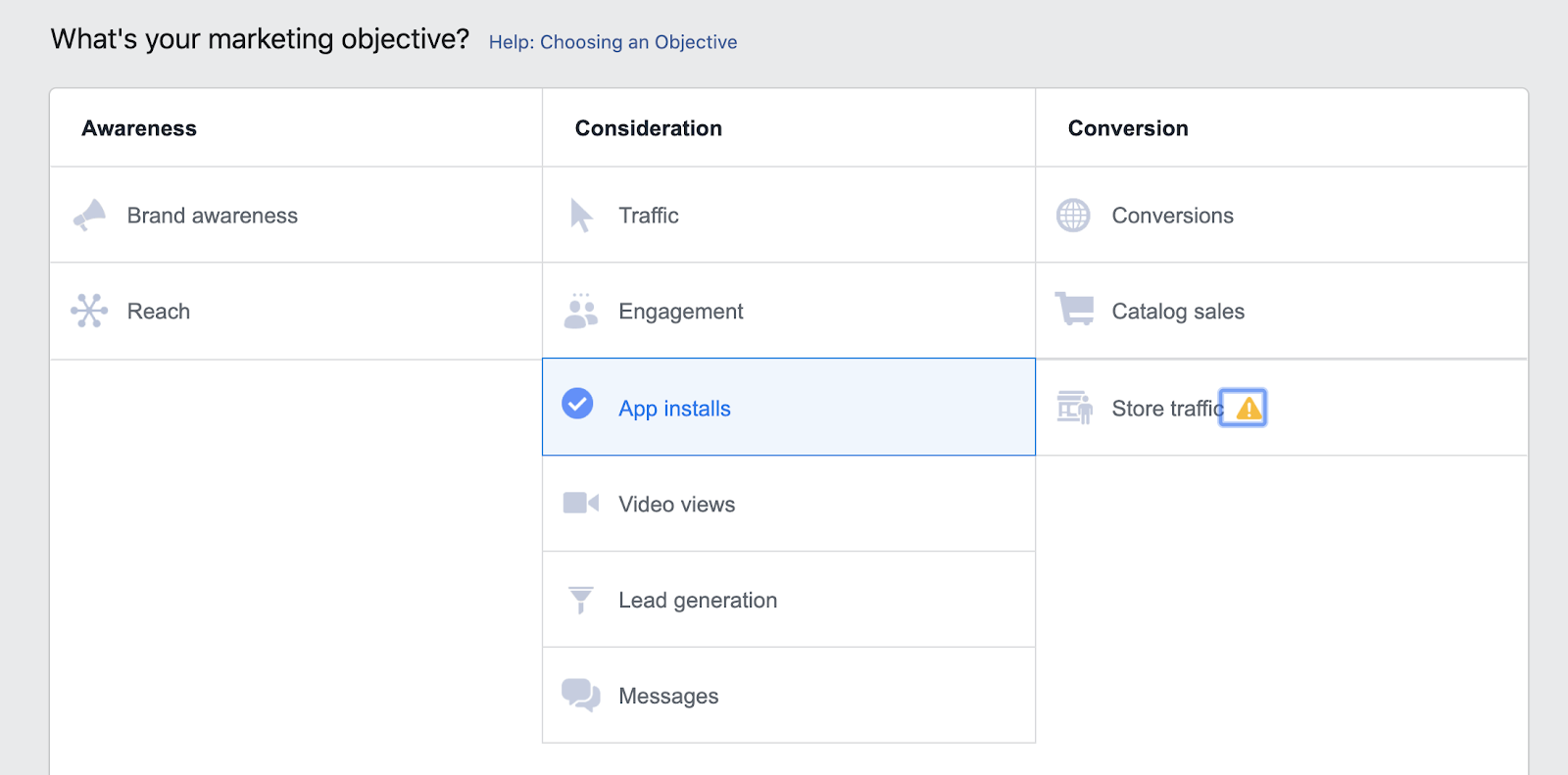
Here’s another example:
If you have a video ad and want to show that ad to people who are most likely to watch it, choose the Video views objective.
2. Not using the Facebook pixel
Are you using the Facebook pixel?
Having the pixel helps you track the effectiveness of your Facebook ads.
Here’s how it works:
The pixel reports actions that people take after clicking your Facebook ad.
For example, let’s say that you’re running a conversions ad.
By installing the FB pixel on your landing page, you will know whether your audience completed your sign-up form or not. (If they don’t, you can improve your ad’s message, offer, or targeting.)
For a campaign that doesn’t convert, you can also run retargeting ads to bring them back.
You will find the pixel code inside Ads Manager. There’s an option to install it yourself or ask the help of a developer.
3. Overdependence on automatic placements
On the Ad Set level of your campaign, you need to decide where your Facebook ad appears.
A common mistake is choosing Automatic Placements all the time just because it says “recommended.”
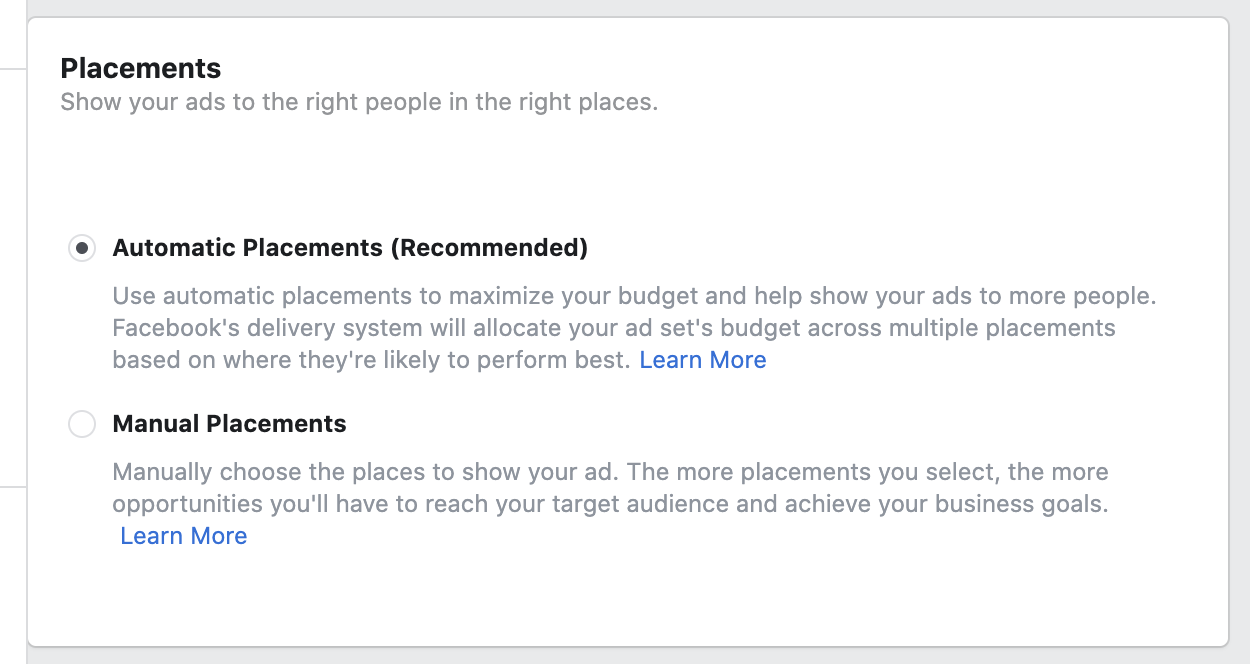
We’re not saying that Automatic Placements is wrong.
But what’s important is that you know the pros and cons of delivering your ads on different placements.

For instance, mobile Facebook News Feed ads perform well when you’re looking to boost engagement or trying to generate more leads – like this ad:
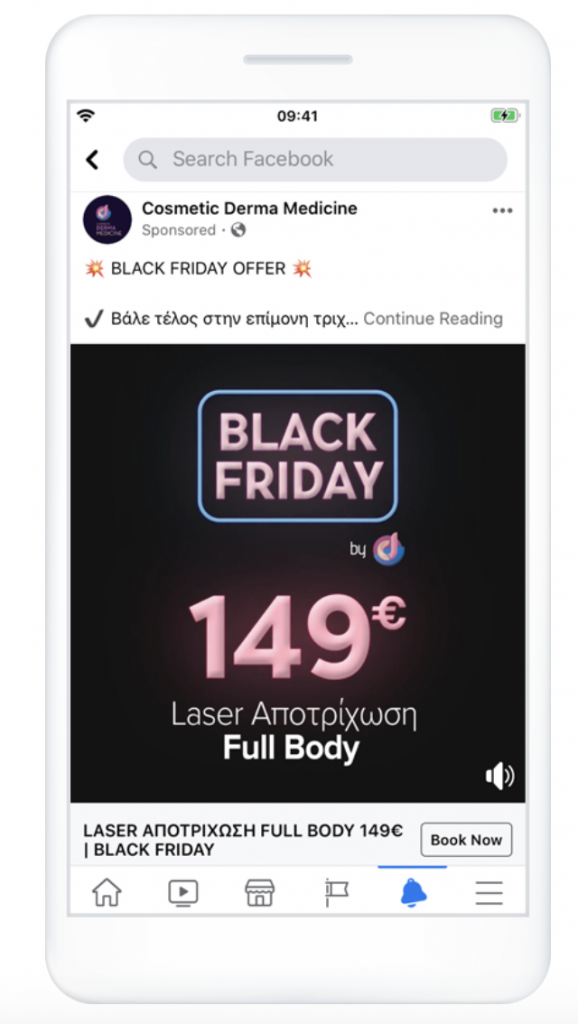
Image credit: Facebook for Business/Success Stories
An effective approach to optimizing for the best placements is to test them.
Run your ad to an audience using automatic placements for a set period. When that period ends, check your ad’s performance inside your Ads Manager dashboard.
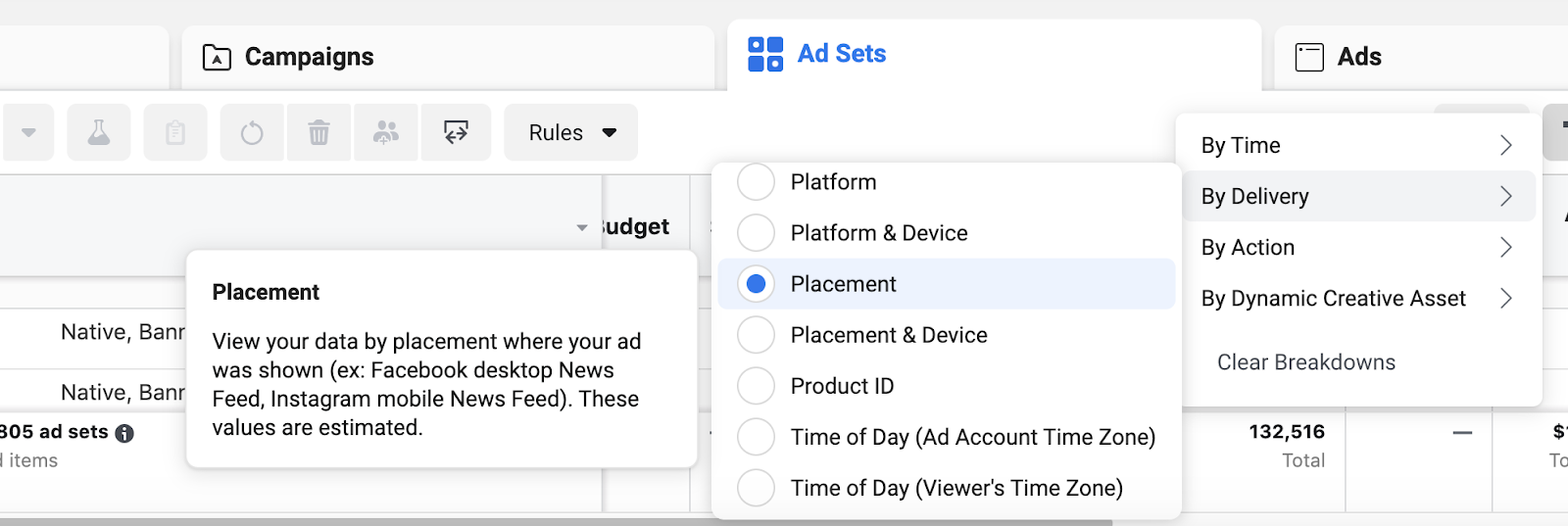
Go to your specific campaign or ad set and click Breakdown. Choose By Delivery > Placement.
This will allow you to see rows of data that shows how well a placement has performed.
4. Not having a compelling offer
You can create a Facebook ad that looks enticing, write compelling copy, and target it to the right audience.
But if people won’t be interested in your offer… you’re just wasting money on your ad.
That said, start with a great offer.
It doesn’t matter if you offer an ebook, webinar, or a physical product. Whatever it is, it should address their problems, needs, and interests.
You also need to ask yourself:
Is this something that my audience would willingly spend money on? If your answer is yes, most likely, you have a great offer. ?
5. Poor targeting
Are your organic Facebook posts getting less and less engagement?
This is because organic reach has declined.
But with Facebook ads’ targeting capabilities, you can reach your best audience at the right time.
The key is to use targeting properly.
One of the most common Facebook ad errors that beginners make is…
Targeting the wrong audience.
Knowing who your customers are is a basic ingredient for a successful ad campaign.
Do your research to find out:
- Where they live
- Demographic information (Age, Gender, Marital Status, etc.)
- Interests
- Behaviors
- Engagement (Whether they liked your page, used your app, and responded to your event)
- Languages they speak

As long as you understand your audience well, it will be easy for you to define them inside Ads Manager.
Be careful not to make your audience too broad or narrow. Facebook lets you know about this. See the screenshot below.
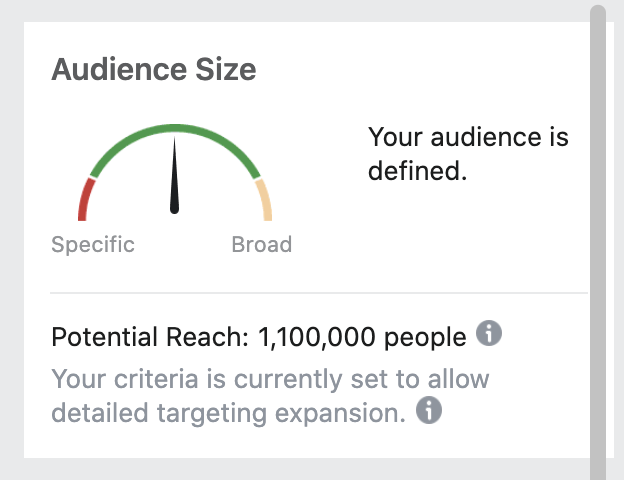
When defining your target audience, you also want to consider a Lookalike Audience. It’s an option inside Ads Manager that allows you to target new audiences that exhibit similar characteristics as your current customers.
So if you already have a list of customers who regularly engage with you, you might as well use that to build a lookalike audience.
That way, you can advertise as precisely as possible and increase your ROI!
6. Not using video
Recent studies reveal that online video has a 90% penetration rate among internet users. Online video is popular across different devices.
If you’re still not taking advantage of this engaging video format, you’re missing out.
Ritual Gym, for example, utilized mobile Facebook video ads to reach those interested in fitness and boost their membership sign-ups.
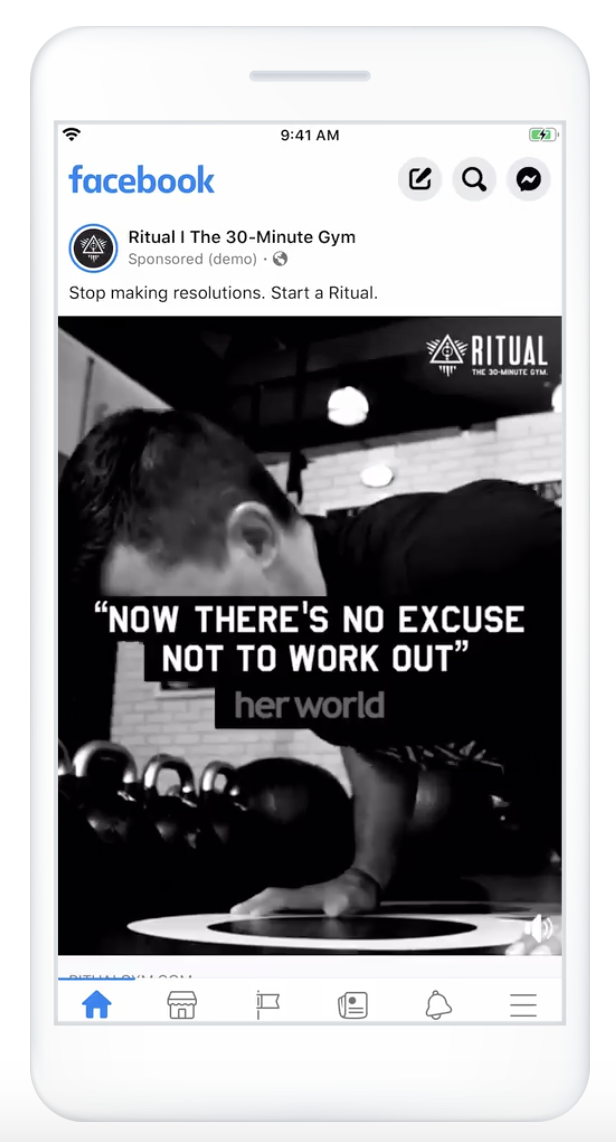
Image credit: Facebook for Business/Success Stories
The video ads gave people a sneak peek of what a 30-minute workout looked like at Ritual Gym.
When running Facebook video ads, pay attention to your metrics:
- Reach
- Average watch time
- Watches at certain percentages
- Thruplay
- Cost per thruplay
?Here is a list of the best video ads best practices to inspire your future campaigns.
7. Hitting the “boost post” button every time
If you’re serious about taking your advertising to the next level, don’t rely too much on the boost post option.
Not that boosting your posts is wrong.
But Facebook ads offer more control over your targeting and placement.
The boost post option is also optimized for showing your ad to as many people as possible, but not so much on people who are likely to convert.
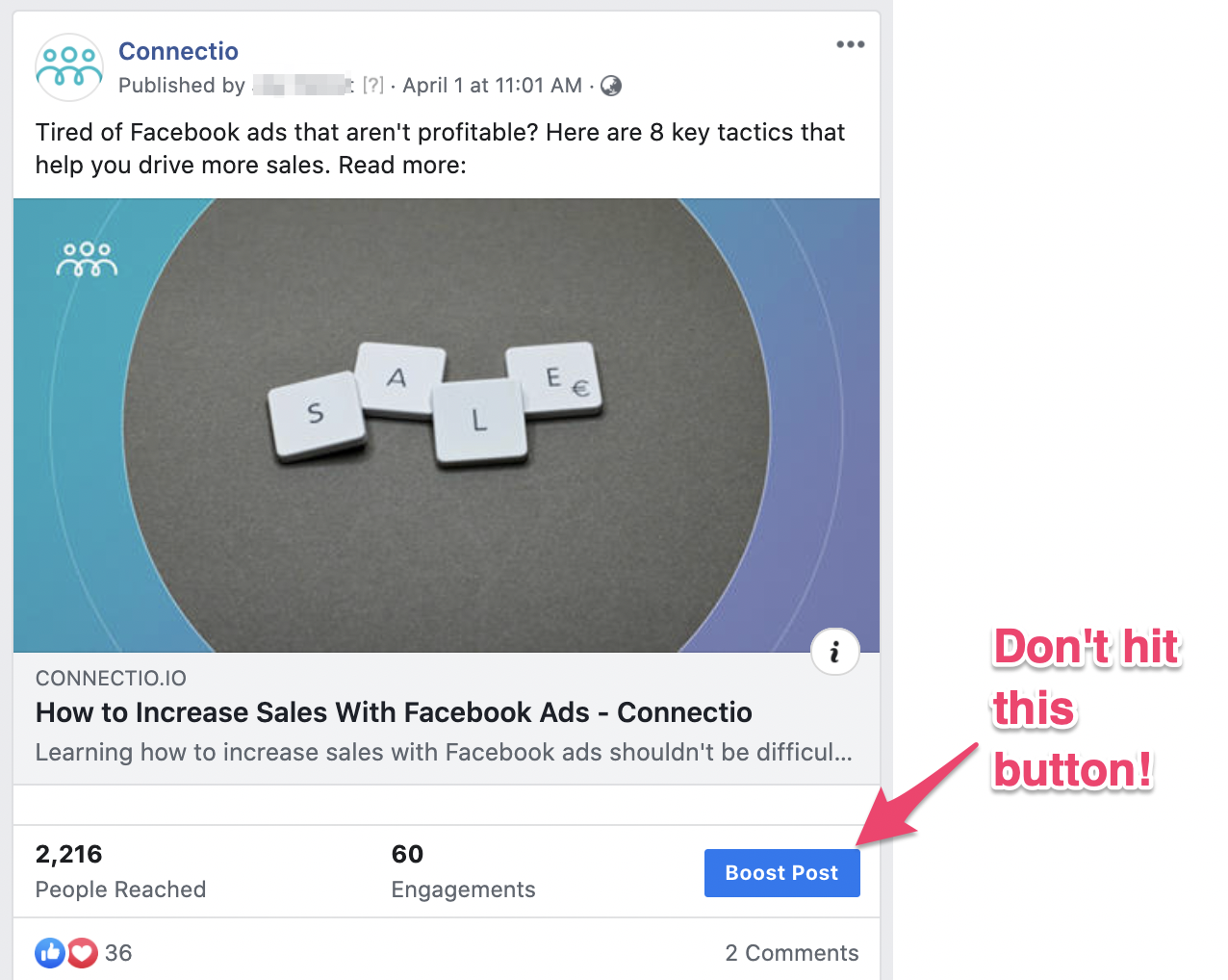
If you want to promote your best-performing Facebook posts and get as many conversions from them as possible, use the Ads Manager.
There’s also a better way to turn your best Facebook posts into ads — and that’s by automating them. You cannot do this inside your Ads Manager.
This is where our tool ConnectAutomate helps!
8. Letting ad fatigue to kick in.
Another one of the most common Facebook ad mistakes is leaving a campaign to run on its own.
If you show the same ads to the same people, there comes a point when they become less responsive to your ads.
This situation describes ad fatigue.
Here’s a simple diagram that shows what ad fatigue looks like.
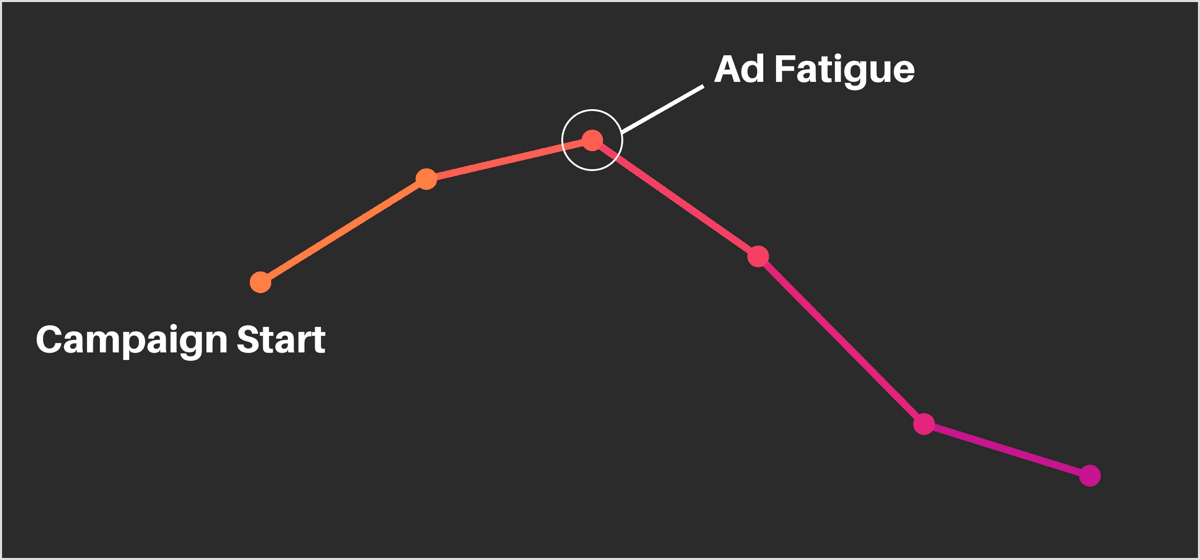
Image credit: Social Media Examiner
Fatigue happens even to good Facebook ads.
That is why you should be able to identify it.
Go to your Ads Manager and choose Delivery in the Columns dropdown. With this option, you can easily check the frequency and impressions of your ad.
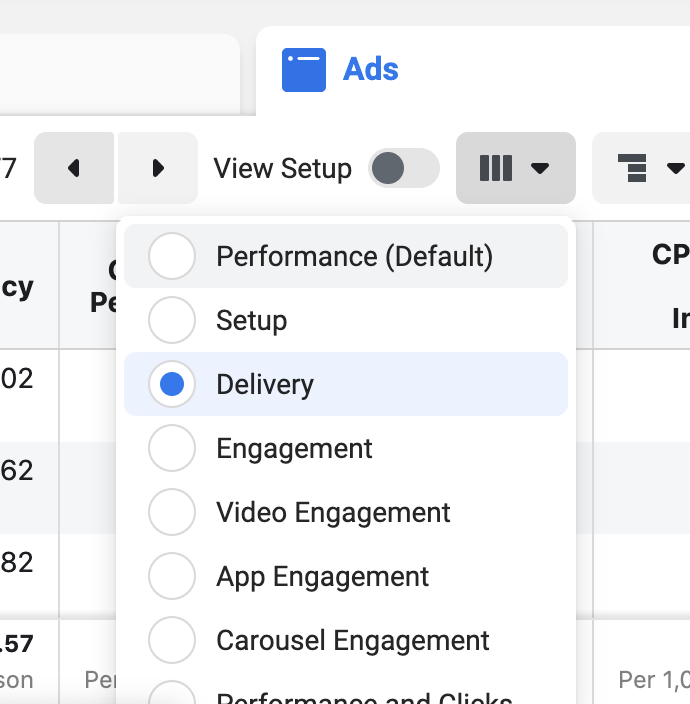
If the frequency has increased and impressions have dropped, it’s safe to say that your ad is experiencing fatigue.
Here are some ways to beat Facebook ad fatigue:
- Once you identify high ad frequency, pause your ad.
- Run your ads on schedule. This means showing your ads based on your audience’s time zone. You might even need to pause Facebook ads at night especially if your ads require filling out a form or completing a purchase. (These things require effort from your audience.)
- Update your ad creative. Change your image/video, campaign objective, copy, and call-to-action.
9. Writing bad headlines
Your Facebook ad headline matters.
A good headline entices people to click through, while a bad headline does the opposite.
In a few words, your headline should capture attention right away.
Here’s where your headline is located:
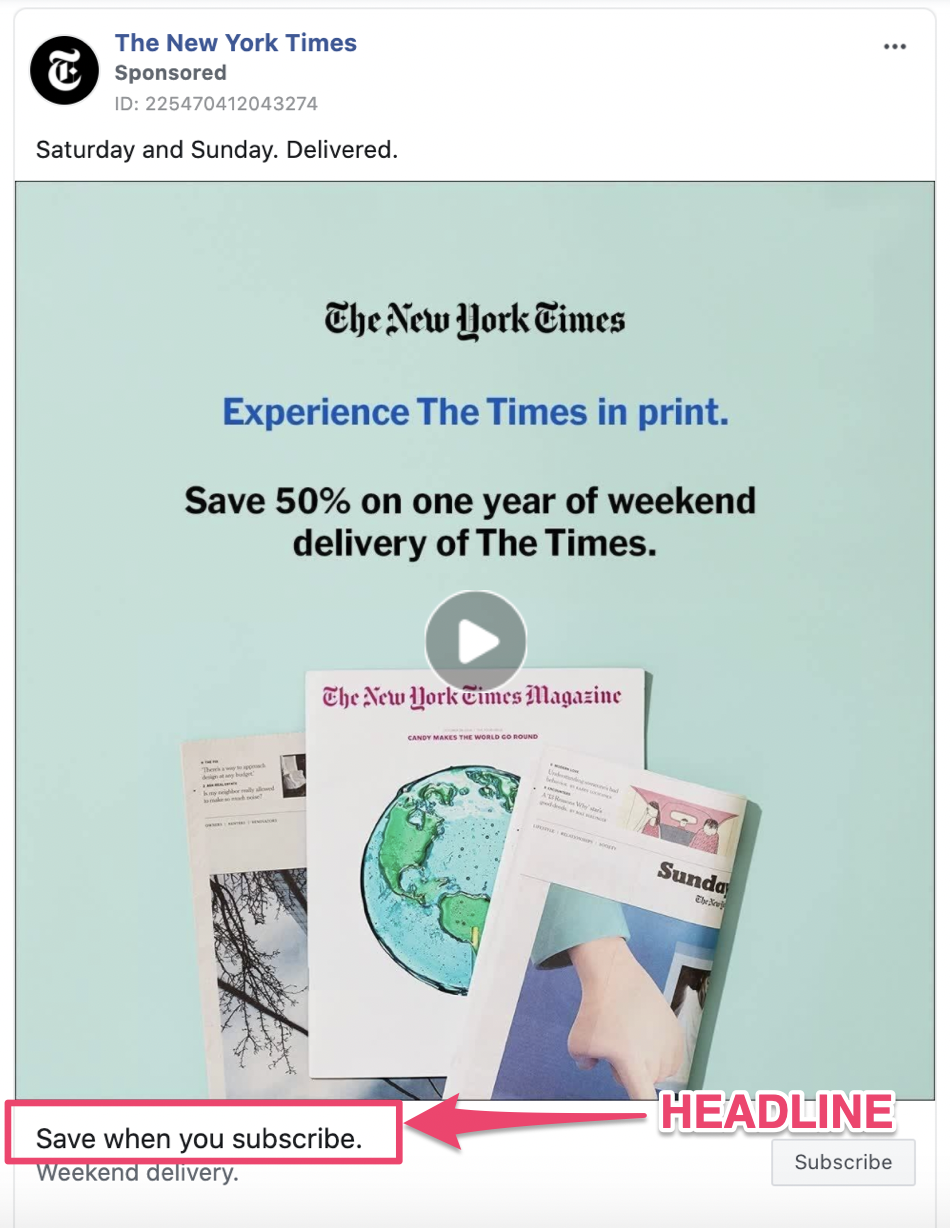
Image credit: Facebook Ads Library
Luckily, there are plenty of ways to ensure that your headline stands out:
A good strategy is to state the obvious benefit of taking action. Take, for example, the Facebook ad above from The New York Times.
Here’s another powerful tip:
Incorporate words that trigger emotion. Some examples include exciting, greatest, conquer, promising, successful, and surprising.
CoSchedule has an awesome PDF list of these power words.
10. Not taking advantage of retargeting ads
Here’s the reality:
The majority of people who arrive on your website aren’t ready to convert. Your audience may not sign-up for your free offer or hit the “buy” button.
Usually, someone needs to gather more information about a product or business before they take action.
Some people also look around to find better deals on what you’re selling.
But should you leave these people who don’t convert, alone? No.
What to do instead:
Give them a little nudge to remind them about what they were interested in through retargeting.
For example, MyGlamm, a European beauty brand, used dynamic ad retargeting. This showed ads to people who viewed their product catalog but did not make a purchase yet.
Below is an example of their ad:
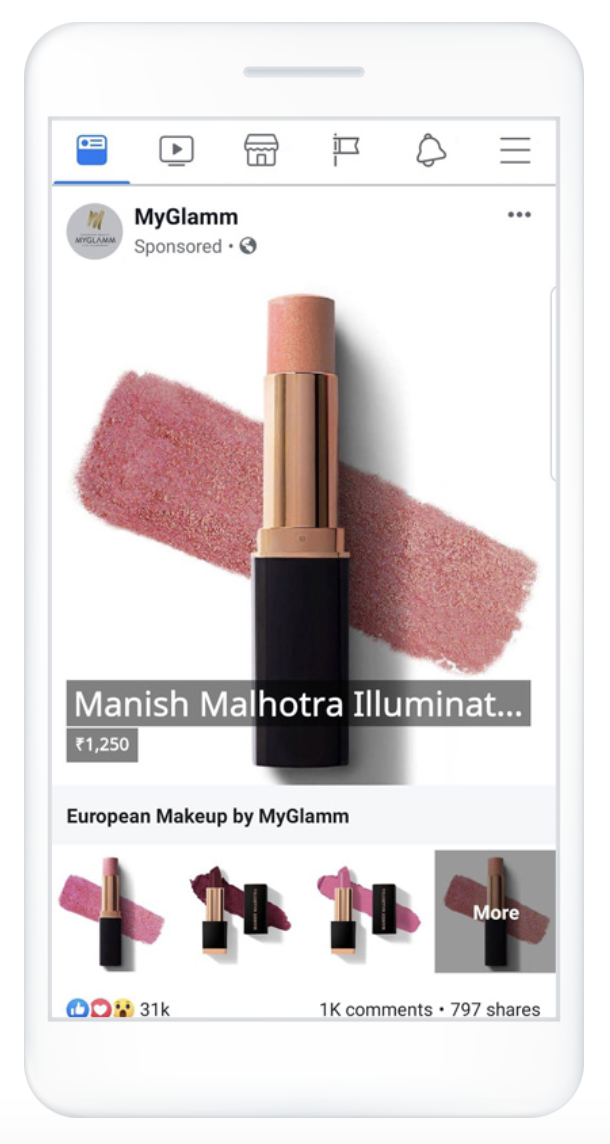
Image credit: Facebook for Business/Success Stories
Pro Tip: To gain their trust and confidence with your retargeting ad, incorporate social proof in your ad copy. Social proof such as testimonials or user-generated content helps in the buying decision process.
Related: How to Gather Customer Testimonials to Achieve the Best Facebook Ad Results
11. Not using audience exclusion
Would you still want to show your ad to people who already converted from that exact same ad? Of course not.
If you do this, you’re only going to waste money on clicks.
Make sure that you take advantage of audience exclusion targeting. This enables you to exclude those who already took action from your Facebook ad campaigns.
To do this, follow these steps:
1. First, install the Facebook pixel on your website. If you don’t know how to do this, check out this guide. (With the FB pixel, you can track people who already made a purchase or signed up for your offer.)
2. Create a website Custom Audience of those people who converted. Go to Audiences in your Ads Manager. Click Create Audience > Custom Audience. Choose “People who visited specific web pages.”
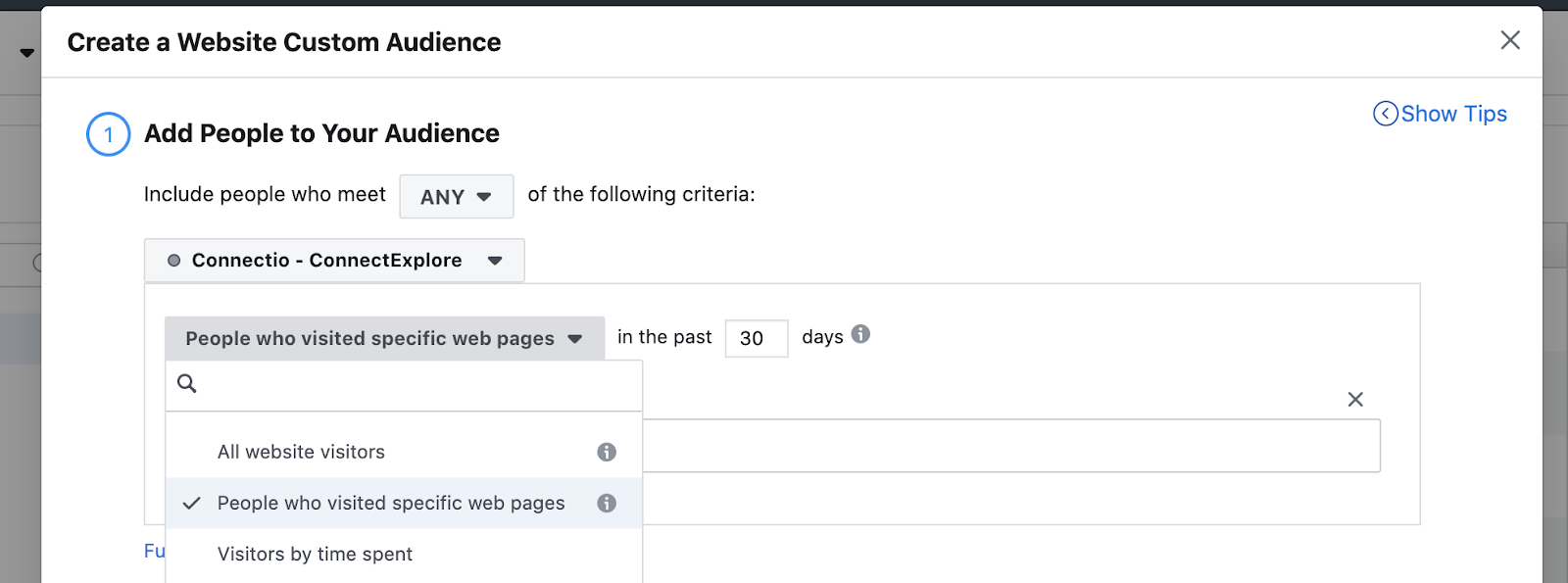
After that, change URL contains to URL equals. Also change the time period to 180 days. Next, copy and paste the URL of your web page (where you take people after they convert) on the field. See the screenshot below.
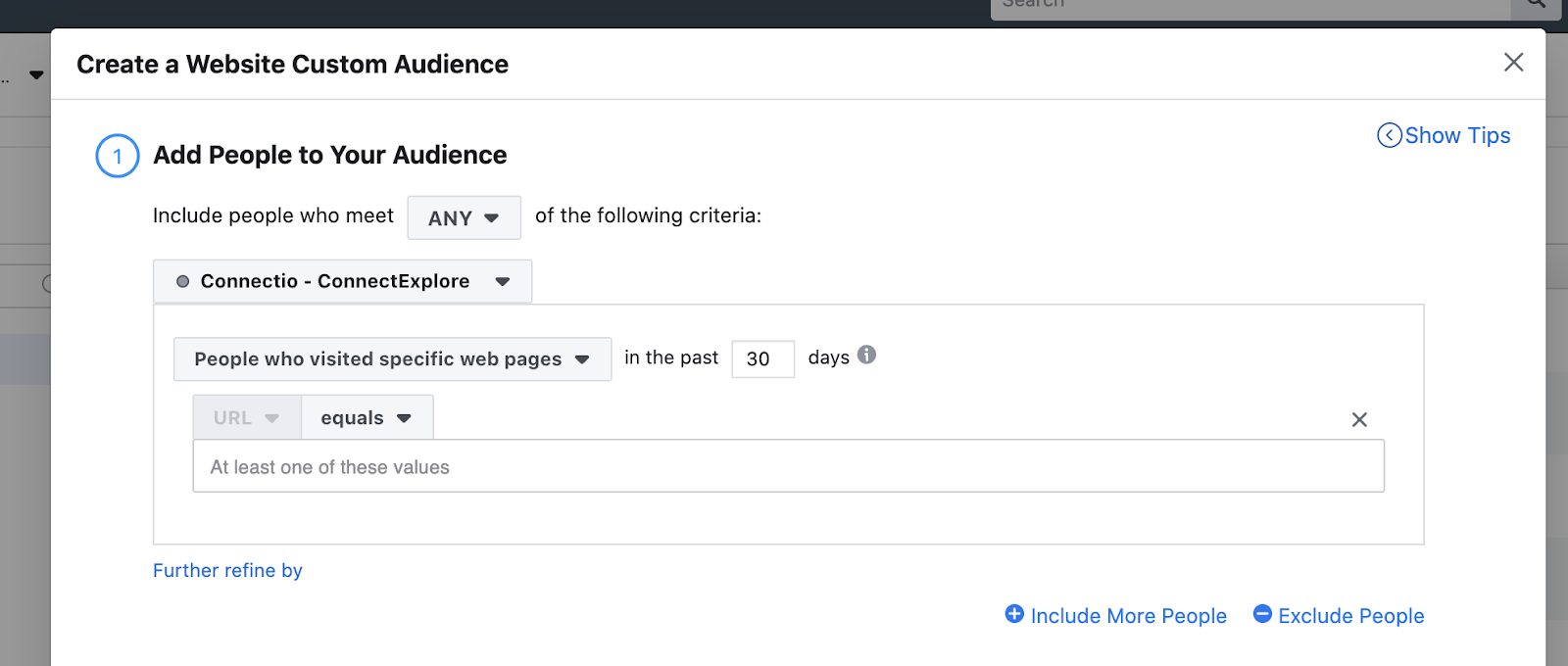
3. Finally, go to ads creation in Ads Manager. On the Ad Set level, click the Exclude option under Custom Audiences. Then select the name of your Custom Audience.
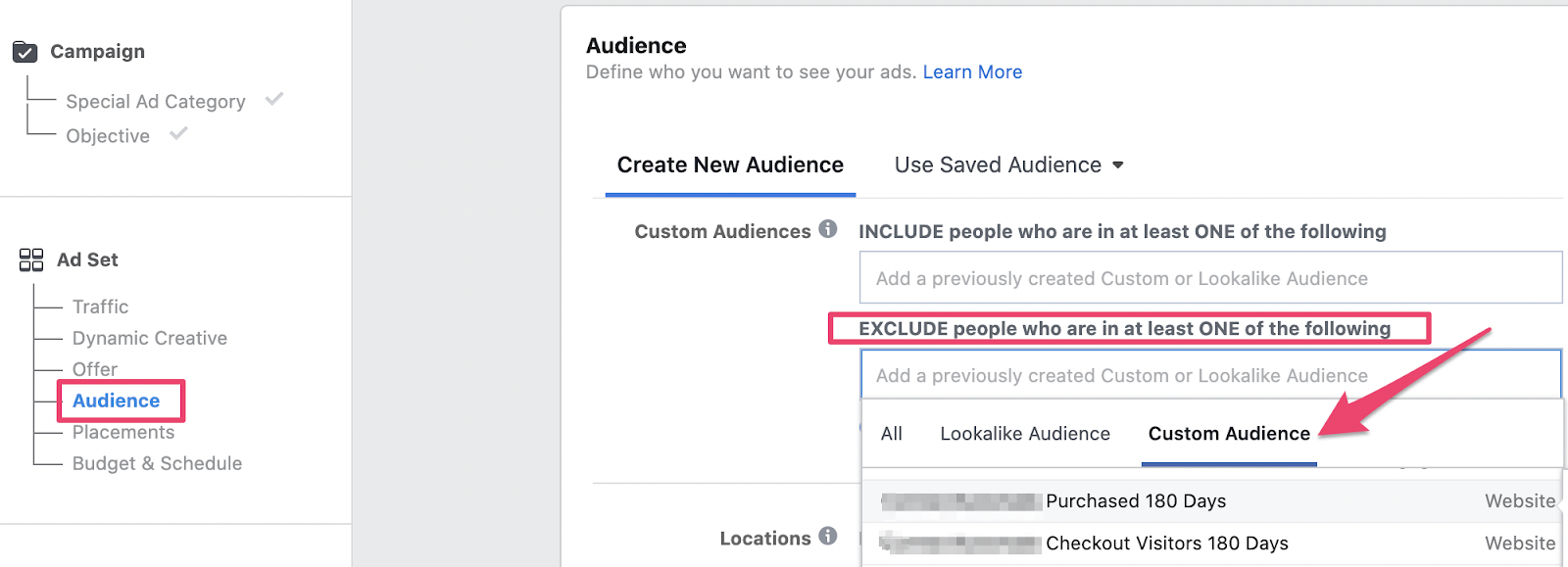
This should ensure that you don’t spend your budget unnecessarily.
?Get Our Free Facebook Ads ROI Calculator>>
Final Thoughts
Have you made any of these Facebook ad mistakes?
Avoiding these pitfalls will help you run more profitable ad campaigns. But again, these mistakes are easy to avoid.
With the help of this guide, you can do it. ?
?If you also need Facebook advertising tools to automate and optimize your current campaigns, we invite you to check out Connectio. Our tools meet every need — from better retargeting to interest targeting!

